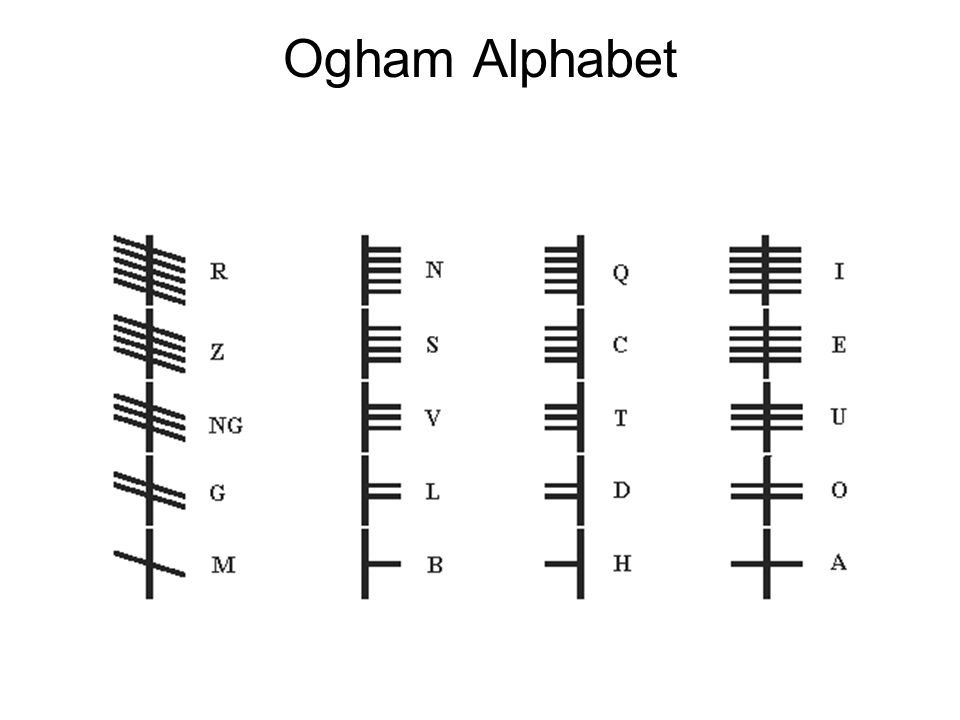An Introduction to Ogham
In this article, I will provide you with an introduction to Ogham, exploring its history, meanings, and its use in divination. Whether you’re a beginner or already intrigued by this mystical script and divinatory system, this guide will help you gain a better understanding of Ogham and how it can enrich your spiritual journey.
What is ogham?
Ogham (pronounced OH-mm) is a writing system that dates from the 4th century CE that was used to write Primitive Irish and is used today as both a writing and magical and divinatory system. Each letter in the Ogham alphabet is called a fid (pronounced fee) and a group of letters is called a feda (pronounced fed-ah).
Ogham feda are composed of a series of straight lines, typically inscribed vertically or horizontally on a surface. These lines are grouped into clusters, each representing a specific letter or character
Stones with ogham inscriptions are found all around Ireland and areas surrounding the Irish Sea.
You may also see it spelled ogham spelled as ogam, which is the Old Irish spelling (the version of Irish that came after Primitive Irish).
The original alphabet has 20 letters and is divided into four groups of five letters called aicme (hear pronunciation). An additional five letters were added to the ogham in the Old Irish period (600CE to 900CE) and these are known as the forfeda and are less commonly used today.
Each letter has many associated lists that may have been used as mnemonic devices as well as bríatharogaim or kennings which are phrases that are associated with each letter which we can date back to the Old Irish period.
As a quick aside: Often when people have heard of ogham it’s through Robert Graves’ The White Goddess and his “Celtic tree calendar” or “Celtic astrology.” Ogham is not a calendar or time-keeping system and has many associations beyond just trees.
What do the ogham letters look like?
The ogham letters are formed by tally marks that come off of a central line. They are generally read from bottom to top when the text is arranged vertically (as it often is on stone inscriptions) or from left to right if it is arranged horizontally.

Where did ogham come from?
There are 2 main theories on where ogham comes from. The first is that ogham was created by the Irish to be a written language that could not be understood by Latin speakers (primarily for political. religious, and military purposes).
The other mainstream theory is that the ogham was invented by early Irish Christians because the Irish language was difficult to write in the Latin alphabet.
There is also an older theory that ogham was invented by Druids in Gaul which has since been discredited as it has since been shown that ogham was almost certainly created for writing primitive Irish.
What are ogham’s mythical origins?
The Book of Invasions and The Scholar’s Primer both have similar stories about the invention of ogham that relate to the Tower of Babel (see this episode of The Constant podcast for more context around this).
In this version of the story, a (fictional) Irish king sends out a group of scholars shortly after the fall of the Tower of Babel to try and reconstruct our previously shared language that the Christian God had destroyed. Those scholars take the best part of each new language that they find and mix them all together and create the Irish language/recreate the original language before the fall of the Tower of Babel and the ogham writing system with each fed being named after one of the scholars who helped reconstruct the language.
However The Scholar’s Primer contains a second creation story and it tells us that the god Ogma, a God known for his skills in speech and poetry, invented the ogham to warn the God Lugh that his wife would be stolen away to the Otherworld unless he protected her with birch.
What are ogham’s uses today?
Today ogham is primarily used in Pagan circles as a writing and divinatory system. The bríatharogaim and associated lists for each letter are generally used as a guide to the letter’s divinatory meaning. The main reference cited for ogham as a divinatory tool is a brief mention in The Wooing of Etaine but not much information is given on how exactly the ogham was used other than it involving yew wands with the ogham written on them, but reading methods tend to vary from practitioner to practitioner.
Where can I learn more about ogham?
Books
Ogam: Weaving Word Wisdom by Erynn Rowan Laurie
Ogham: The Secret Language of the Druids by Robert Lee Ellison
Courses
3 Truths About Ogham (Free!)
Primary sources
Ogham is a unique and enchanting script that carries profound historical and spiritual significance. I hope that this guide has introduced you to its history, meanings, and its potential for divination. Whether you’re drawn to its mystical allure or wish to deepen your understanding of Irish culture, Ogham has much to offer.
